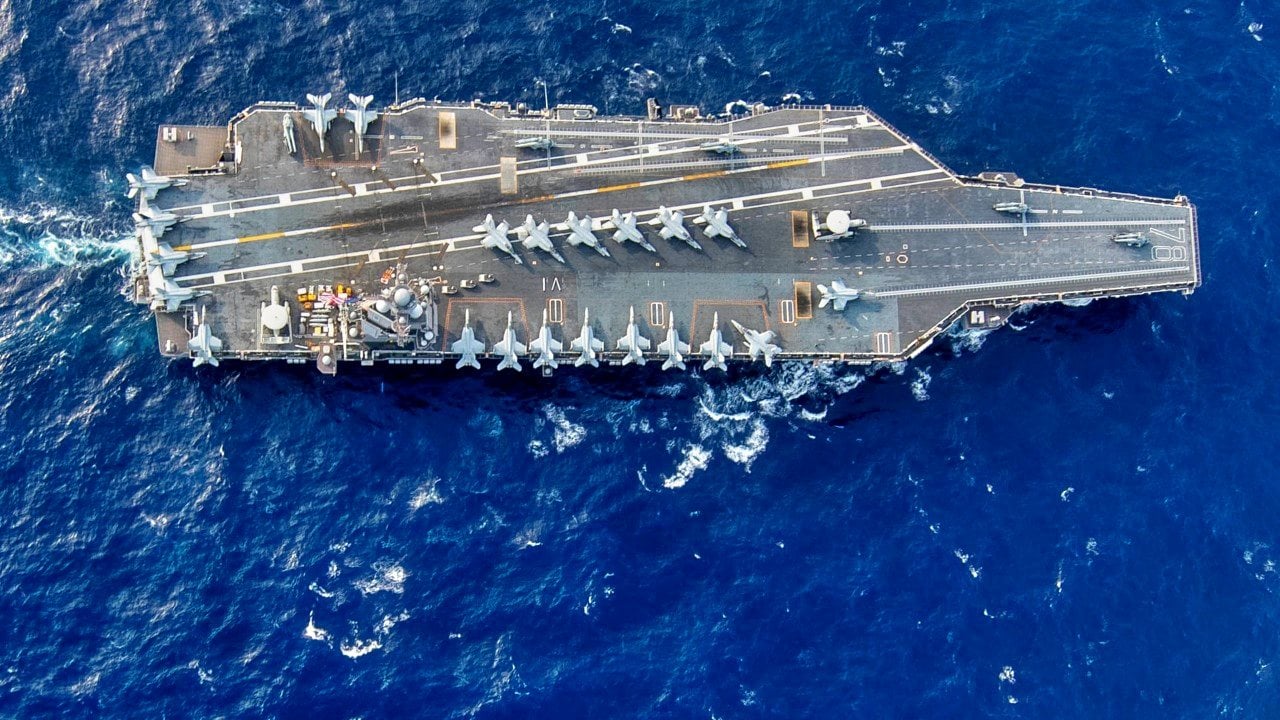
China’s ‘Carrier Killers’: How DF-21D and DF-26B Missiles Threaten U.S. Navy
Summary and Key Points Everyone Needs to Know on This Topic: China’s People’s Liberation Army Navy (PLAN) has developed advanced anti-ship ballistic missiles (ASBMs), specifically the DF-21D and DF-26B, known as “carrier killers.” The DF-26B, unveiled in 2015, boasts a range of 4,000 km and can carry nuclear or conventional warheads, posing a threat to ground and naval targets, including U.S. territories like Guam.
-The DF-21D, the world’s first ASBM, has a range up to 2,150 km and features a maneuverable warhead with high accuracy, capable of striking moving vessels like U.S. aircraft carriers.
-China’s testing of these missiles in the South China Sea signals a strategic effort to counter U.S. naval power, impacting not only the U.S. but also regional navies such as India and Japan.
-The United States Navy is one of the most powerful maritime forces in the world.
Can China’s ‘Carrier Killer’ Missiles Outmatch the U.S. Navy’s Supercarriers?
However, China’s People’s Liberation Army Navy (PLAN) has surpassed it in size, and Beijing will likely use it to increase its presence in the region and beyond.
At issue, however, is the fact that the U.S. Navy maintains 11 nuclear-powered aircraft carriers, as well as nine amphibious assault ships (LHDs), which is used to maintain force projection around the globe.
Yet, even as China launched its third, and largest, aircraft carrier, the Type 003 Fujian, a key to Chinese victory in a war with the United States wouldn’t likely be a Battle of Midway carrier slug match.
Instead of trying to go toe-to-toe – or more accurately carrier-to-carrier – against the United States Navy, the PLAN would more likely seek to remove the U.S. carrier force from the board entirely. That is where the PLAN’s DF-21D and DF-26B anti-ship ballistic missiles (ASBMs) could come into play.
This is a threat the United States needs to take seriously.
In the late summer of 2020, China conducted test launches of both platforms into the South China Sea, and the move came just one day after Beijing accused the United States of sending a U-2 spy plane into a “no-fly zone” during a People’s Liberation Army Navy (PLAN) live-fire naval drill in the Bohai Sea off China’s north coast.
One of the missiles – the DF-26B – was launched from the northwestern province of Qinghai; while the other – the DB-21B – was launched from the eastern province of Zhejiang. Both of the missiles were fired into an area between the Hainan province and the Paracel Island, a source with the People’s Liberation Army (PLA) told the South China Morning Post at the time.
The landing areas were within a zone that maritime safety authorities in Hainan had said would be off-limits because of those military exercises.
That Sinking Feeling – Meet China’s Carrier Killers, the DF-21 D and DF-26
China first unveiled the road-mobile, two-stage solid-fueled intermediate-range ballistic (IRBM) DF-26B (Dong Feng-26) during a military parade in September 2015. It has a reported range of 4,000km (2,485 miles) and it can be used in both conventional and nuclear strikes against ground as well as naval targets.
The mobile launcher can carry a 1,200 to 1,800 kg nuclear or conventional warhead, and as it could directly strike a target such as the U.S. territory of Guam in the event of war it should be seen as a formidable weapon.
More ominously, the DF-26B has been described as a carrier killer due to how it could be used to target the U.S. Navy’s fleet of Nimitz– and Ford-class nuclear-powered supercarriers.
Especially noteworthy about the DF-26B is that it is a dual-capable missile, a type of weapon banned by the Intermediate-range Nuclear Forces Treaty signed by the United States and the Soviet Union near the end of the Cold War. However, China was never invited to join the agreement, and the United States withdrew from the treaty during the Trump administration citing Beijing’s deployment of such weapons as a justification.

The other missile, the DF-21D has been described as the world’s first anti-ship ballistic missile (ASBM) or “carrier killer.” The DF-21D first entered service more than 30 years ago and replaced the obsolete Dong Feng-2 (CSS-1). It became China’s first solid-fuel road-mobile missile.
Able to deploy a 600 kg payload with a minimum range of 500 km (311 miles) and a maximum range of 2,150 km, the DF-21D’s warhead is likely maneuverable and may have an accuracy of 20 m CEP (circular error probable). That could make it instrumental in striking a vessel in the open ocean or denying access to a potential opponent in transiting to a conflict zone in waters that Beijing seeks to control, such as the East or South China Seas.
It isn’t just the United States Navy that could find itself in the PLAN’s crosshairs. The missiles could certainly be used to target India’s or Japan’s aircraft carriers.
About the Author: Peter Suciu, Defense Expert
Peter Suciu is a Michigan-based writer who has contributed to more than four dozen magazines, newspapers and websites. He regularly writes about military hardware, firearms history, cybersecurity and international affairs. Peter is also a Contributing Writer for Forbes.
All images are Creative Commons.


